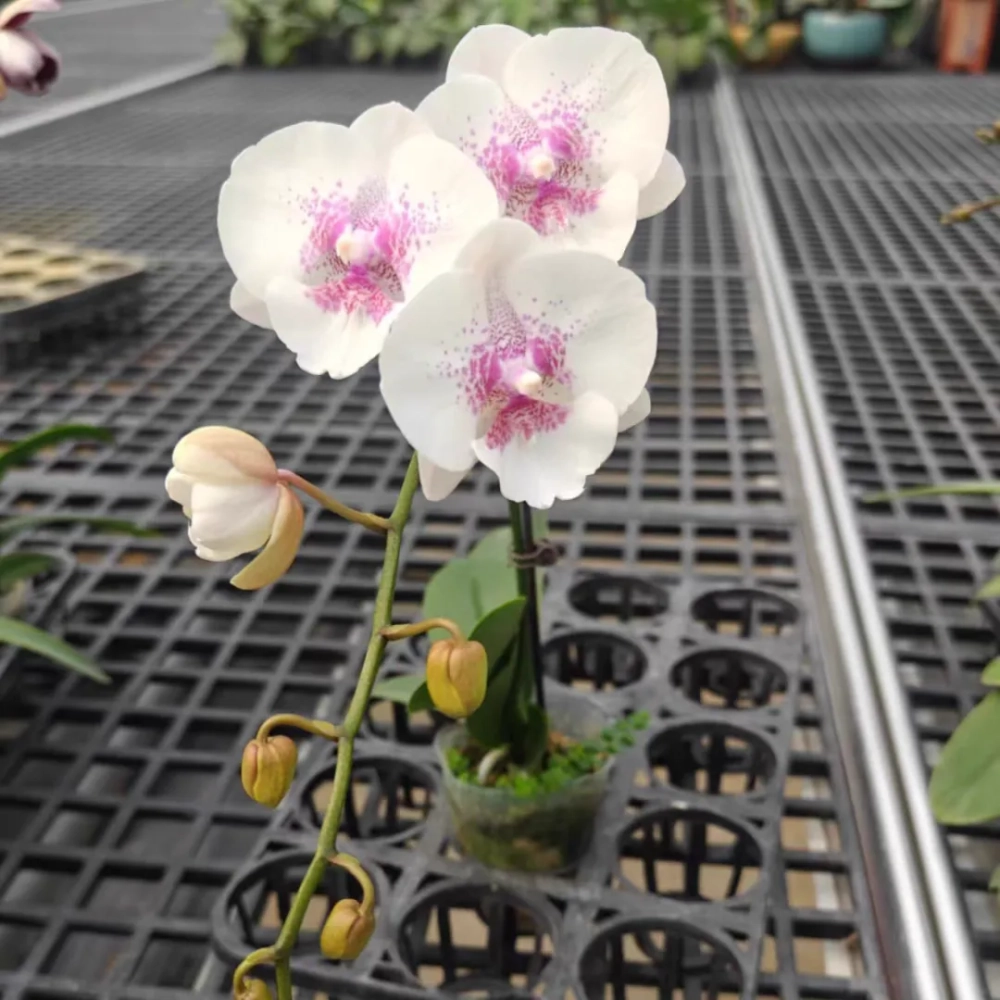Today, I'd like to introduce to you a super charming flower - the Phalaenopsis 'Maple Leaf Big Tongue'. It can be regarded as a paragon of delicacy and beauty in the Phalaenopsis 'Pockmarked' series!
The evenly and finely dotted patterns of the Phalaenopsis 'Maple Leaf Big Tongue' are distributed on the petals in a well-proportioned manner, adding a unique texture and mystery to the originally gorgeous flowers. Paired with the lacy swallowtail tongue, it looks lively and elegant.
When the flowers of the Phalaenopsis 'Maple Leaf Big Tongue' wither, don't rush to throw it away. First, use scissors to cut off the flower stem at a position 2 - 3 nodes above the base. This can reduce the consumption of nutrients and promote the germination of new branches. Then, check whether the plant has pests and diseases or withered leaves, rotten roots and other problems. If so, timely pruning treatment should be carried out. The pruned Phalaenopsis can be appropriately given more light and ventilation while waiting for it to grow new flower buds or lateral buds again.
Key points for daily cultivation:
1. Light: The Phalaenopsis 'Maple Leaf Big Tongue' prefers bright, filtered light. It's quite good to place it in a location near the window but not directly exposed to sunlight. When the sunlight is strong in summer, proper shading measures must be taken to avoid the leaves from being sunburned. In winter, the light exposure time can be appropriately increased, which helps the plant grow vigorously.
2. Temperature: The suitable growth temperature ranges from 18 to 28 °C. When it's hot in summer, attention should be paid to cooling down. Ways like spraying water around the environment can be used to increase air humidity and lower the temperature. In winter, keep it warm. When the temperature is below 10 °C, it should be moved to a warm indoor place to prevent frostbite.
3. Watering: Follow the principle of "watering when the soil is dry to the touch and watering thoroughly". Insert your finger about 2 - 3 centimeters into the soil. If it feels dry, then it's time to water. Water thoroughly until water flows out from the bottom of the pot, but don't let water accumulate in the pot, otherwise it's easy to cause root rot. Generally speaking, in spring and autumn, watering can be done 1 - 2 times a week. When the temperature is high in summer and water evaporates quickly, the frequency of watering can be appropriately increased. In winter, the amount of watering should be reduced, and watering can be done about once every 2 - 3 weeks.
4. Fertilization: During the growing season, apply a thin liquid fertilizer once every 2 - 3 weeks. The concentration of the liquid fertilizer should be low to avoid burning the roots. Before flowering, some phosphorus and potassium fertilizers can be applied additionally, such as potassium dihydrogen phosphate solution, which can promote flower bud differentiation and make the flowers more colorful and larger.
Is the Phalaenopsis 'Maple Leaf Big Tongue' variety good - looking?

Share with
Tagged in :




Leave a Reply